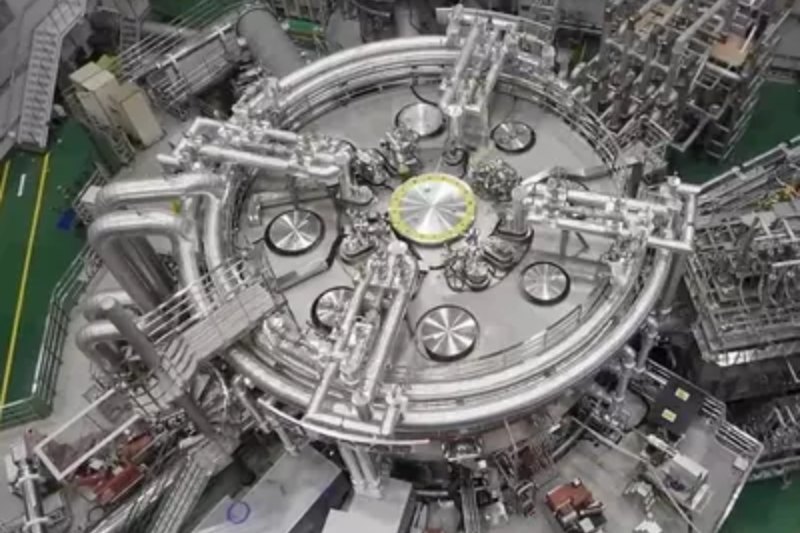Record-Breaking Oran “ArtificIAL Sun” Reactor Sets a Record at 100 Million Degrees

With what they call a significant advancement in technology, South Korean scientists have broken the previous record for the world record in nuclear fusion utilizing the Korea Superconducting Tokamak Advanced Research (KSTAR) device, a “artificial Sun” nuclear fusion reactor.
The scientists were able to produce plasma temperatures for 48 seconds that were 100 million degrees Celsius, or seven times hotter than the center of the Sun. This shows that they are developing new techniques to contain the material and may eventually make it into a useful source of power for extended periods of time. The previous record for the facility was only 30 seconds, established in 2021.
Fusion energy is straightforward in principle. Scientists want to create a net positive quantity of safe, pollution-free energy by fusing atoms together inside a reactor, which is how stars like the Sun function. Nevertheless, fusion reactors are still far from being able to completely replace conventional nuclear power reactors, even with the most recent breakthrough and several decades of research.
Nonetheless, staff members at the Korean Institute of Fusion Energy (KFE) remain upbeat.
The most recent record “will be of great help to secure the predicted performance in ITER operation in time and to advance the commercialization of fusion energy,” said Si-Woo Yoon, director of KFE. ITER is the largest nuclear reactor in the world, and it is presently under construction in southern France.
Researchers are trying to extract a net positive amount of energy from the reaction by containing scorching hot plasma inside a “tokamak,” a donut-shaped fusion reactor. They want to boil water and use the steam that is produced to power turbines and generators.
By 2026, Yoon claims, the objective is to eventually maintain temperatures beyond 100 million degrees Celsius for 300 seconds, at which point scientists may discover new techniques to increase production.
Over the past few years, advancements have also been made in other tokamak reactors across the globe. Chinese researchers succeeded in containing plasma within the Experimental Advanced Superconducting Tokamak for 403 seconds last year.
Setting a new world record for fusion energy earlier this year, researchers used the Joint European Torus in the UK to produce 69 megajoules, or enough power for about 12,000 houses, although for a mere five seconds. This was reported by New Scientist.
Additionally, researchers assert that they have doubled the energy required for the laser-based reactor at the National Ignition Facility at Lawrence Livermore National Laboratory in the United States. This reactor design differs significantly from traditional tokamak designs.
It remains to be seen, though, if all this research will ever add up to a fusion energy revolution that could permanently replace nuclear fission reactors.
When the ITER facility in France is finished sometime in the upcoming year, we may finally be getting close to some much-needed answers.